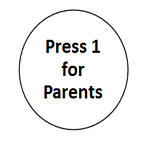Don’t Let “Big Tech” Algorithms Decide Your Child’s Future!
A mind boggling 80% of American parents of children 11 and under say their kids watch YouTube according to Pew research center. For most children, such online platforms not only entertain but also educate, influence and almost shape their future.
And for 81% of American YouTube viewers, it’s YouTube’s algorithm that decides what they watch. The algorithm suggests personalized recommendations based on the user’s previous viewing history and related videos. Once you see a few videos, your path is sealed. More of the same programs tailor-made to your tastes are suggested again, again and again!
The downside of such recommendation algorithms is that they “do more than reflect consumer preferences — they actually shape them” ( MIT Sloan, 2018). And when the end users are the tiny humans in their impressionable age, the preselected, focused choices narrow down their exposure and experiences, shrinking their world into a disconnected, dumbed-down selfish version of the real one.
Dangers of narrow, tunnel-vision learning
When your young child is being schooled by these algorithms into a narrow tunnel-vision learning, their brain, on the other hand, is thirsting for rich learning experiences. A young brain is like a sponge with an amazing ability to absorb and synthesize a wide variety of experiences surrounding the child. And when these experiences do not happen, the brain, on the basis of “use-it or lose-it”, removes the neural connections that are no longer used. Since the brain is rapidly evolving based on the amount of exposure to new areas, this is the crucial time for generalized learning as opposed to the narrowed version enabled by these recommendation algorithms. Learn more about the importance of broad learning for young children here.
Another disadvantage of narrow learning is that they asymmetrically enhance the left-brain thinking and weaken the creative right-brain thinking. McGilchrist , the author of The Divided Brain, argues that even though the contributions of the left and right side brain are equally important, we tend to prefer a more focused and deep learning experience of the left brain. This unilateral preference undermines the right brain responsible for global attention, flexibility and contextual learning among others. Over time, the biased stimulation will discourage creativity, global awareness and holistic thinking needed for our future prosperity.
Narrow tunnel-vision learning is not the future
Does your child have the necessary 21st century skills or learning techniques to be successful in the complex, ever-changing economy of the future?
Just to give you an idea of how fast-changing our economy is, these are some of the jobs that probably didn’t exist ten years ago:
- Social Media strategists
- Mobile app designers
- Professional Video game players
- Instagram Influencers
- YouTubers
According to Tiffany Shlain, the co-founder of International Academy of Digital Arts and Sciences, “The skills needed to succeed in today’s world and the future are curiosity, creativity, taking initiative, multi-disciplinary thinking and empathy. These skills, interestingly, are the skills specific to human beings that machines and robots cannot do”
However, these 21st century needs cannot be met by the narrowed, preselected learning enabled by these big tech platforms.
According to McGilchirst, there is still hope where we can train our brain to engage the holistic right-brain equally as we involve the analytical left-brain and connect to the real world.
In order to foster broad learning and 21st‑century skills, encourage your child to think “outside the box”, jump into the playing field and gather real-life experiences. This process will teach your child to be adaptable, open-minded, tolerant and resilient — all important life skills for being future-ready!
Some ways to encourage broad learning:
Specific suggestions related to big tech platforms
- Clear search history regularly
- Make your child aware of these algorithms and their downsides.
- Suggest for every video they watch of their choice, they need to watch one of yours!
- Create a “lucky draw jar” of different viewing topics.
General suggestions to encourage broad learning
- Read, read, read — anything and everything, hard books, ebooks, magazines, newspapers
- Acknowledge the value of tinkering and allow your child to freely experiment with their surroundings
- Encourage conversations and questions about anything and everything
- Collect experiences — travel, sports, join meetups, clubs
- Encourage your child towards the 4 C’s of learning for 21st century — Communication, Collaboration, Critical Thinking and Creativity
Conclusion
It is intuitive that children in their developing years should be exposed to vast experiences and wide opportunities. However, that knowledge evaporates right in our living room when we let our child interact freely with the online platforms that are quietly deciding and narrowing the learning exposure for them. We know now that broad learning prepares your child for the future as opposed to the narrow tunnel-vision learning fueled by these algorithms. Take back the parenting from these platforms and help your child be future-ready, creative, well-rounded individuals in our ever-changing world.
Originally published at http://press1forparents.wordpress.com on February 15, 2021.
